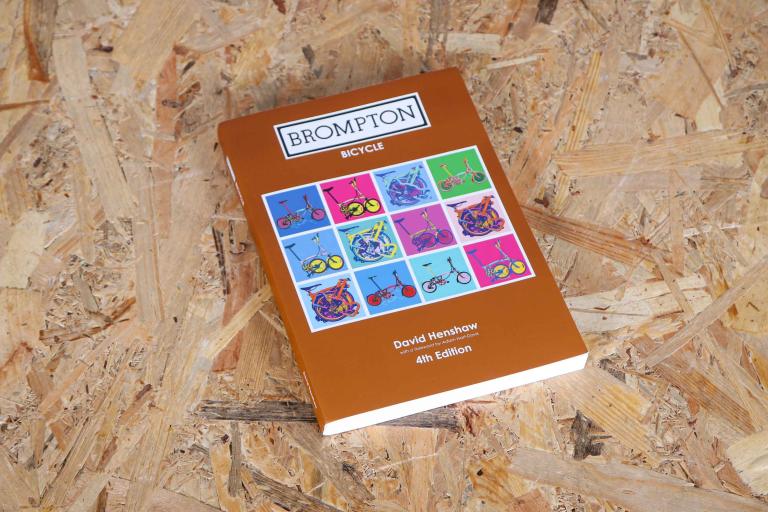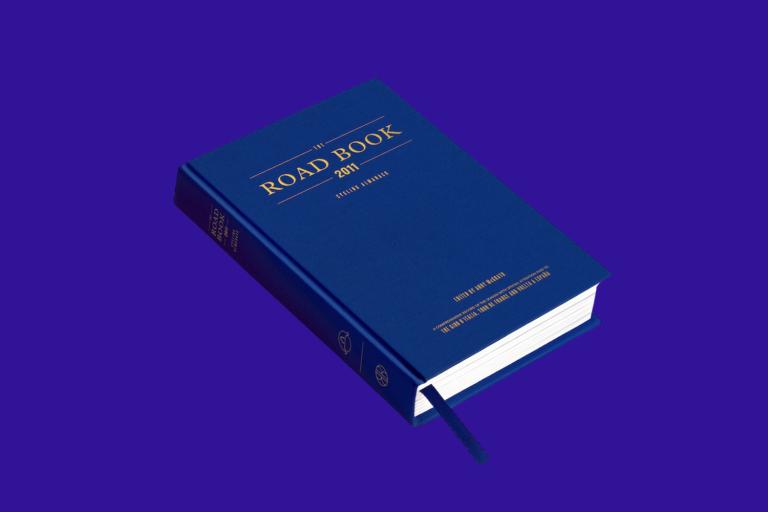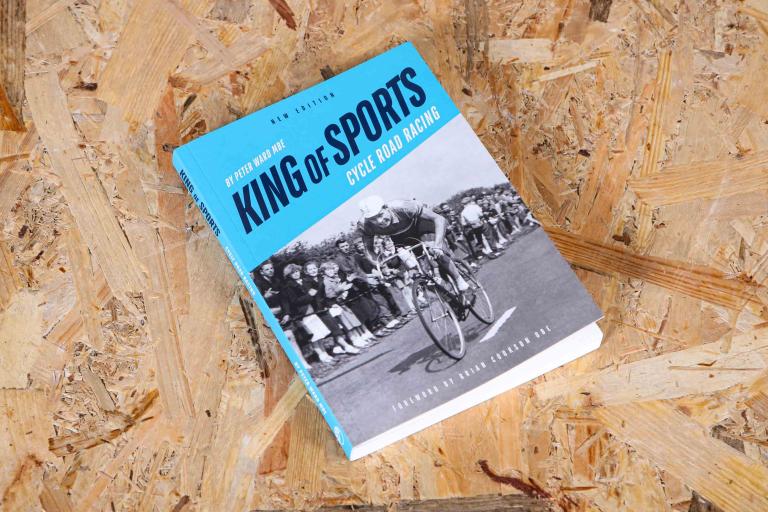- News
- Reviews
- Bikes
- Accessories
- Accessories - misc
- Computer mounts
- Bags
- Bar ends
- Bike bags & cases
- Bottle cages
- Bottles
- Cameras
- Car racks
- Child seats
- Computers
- Glasses
- GPS units
- Helmets
- Lights - front
- Lights - rear
- Lights - sets
- Locks
- Mirrors
- Mudguards
- Racks
- Pumps & CO2 inflators
- Puncture kits
- Reflectives
- Smart watches
- Stands and racks
- Trailers
- Clothing
- Components
- Bar tape & grips
- Bottom brackets
- Brake & gear cables
- Brake & STI levers
- Brake pads & spares
- Brakes
- Cassettes & freewheels
- Chains
- Chainsets & chainrings
- Derailleurs - front
- Derailleurs - rear
- Forks
- Gear levers & shifters
- Groupsets
- Handlebars & extensions
- Headsets
- Hubs
- Inner tubes
- Pedals
- Quick releases & skewers
- Saddles
- Seatposts
- Stems
- Wheels
- Tyres
- Health, fitness and nutrition
- Tools and workshop
- Miscellaneous
- Cross country mountain bikes
- Tubeless valves
- Buyers Guides
- Features
- Forum
- Recommends
- Podcast
review
£20.00
VERDICT:
Everything you ever wanted to know (and didn't know to ask) about cols in the British Isles
Weight:
435g
Contact:
At road.cc every product is thoroughly tested for as long as it takes to get a proper insight into how well it works. Our reviewers are experienced cyclists that we trust to be objective. While we strive to ensure that opinions expressed are backed up by facts, reviews are by their nature an informed opinion, not a definitive verdict. We don't intentionally try to break anything (except locks) but we do try to look for weak points in any design. The overall score is not just an average of the other scores: it reflects both a product's function and value – with value determined by how a product compares with items of similar spec, quality, and price.
What the road.cc scores meanGood scores are more common than bad, because fortunately good products are more common than bad.
- Exceptional
- Excellent
- Very Good
- Good
- Quite good
- Average
- Not so good
- Poor
- Bad
- Appalling
As the name suggests, Cols and Passes of the British Isles provides a comprehensive cataloguing and history of all such features in the British Isles, but the strict scientific definition of a col makes for some unexpected inclusions – and exclusions. It will be of interest to many outdoor enthusiasts, and has enough relevance to on- and off-road cyclists to be a worthwhile reference book.
The first thing you're likely to do when presented with a 'book of lists' like this is to look for an entry that you would recognise. So it was that I looked for some of the climbs in my area. Having failed to find any, I read part of author Graham Robb's highly informative introductory chapter and discovered that most people make the same mistake of associating the word 'col' with a strenuous climb – largely thanks to the role that cols play in the Tour de France.
We are told that a proper col simply 'provides the most efficient route from one valley to the next', whereas 'the Tour's publicity machine bestows the prestigious word 'col' on steep climbs that no animal or shepherd would ever have attempted.'
Robb works to the even more strict scientific and geological definition of a col, which means that, in addition, it has to be created by 'glaciations, seismic activity, or tectonic movement' – often helped along with some erosion.
There are several pages about the many words that ancient languages have used as part of the description for a col or pass (such as hause, swire, nick, bwlch, mam, lairig, and bealach), so having read that, I went to look up Bealach-na-bà – and initially failed to find it despite encountering several hundred other Bealachs. Again, back to the explanatory chapter to discover that all passes are grouped together after the cols, including this favourite of cyclists.
So why is the most famous bealach a pass and not a col? Well, it does not meet the strict scientific definition of a col, as it is 'a pass with a col 800 metres before the summit'. Fortunately a pass is 'a vague umbrella term applied not only to cols but also to a great variety of passages or crossings' so it could still be included.
There are a total of 105 such passes, as well as the 2,002 'proper' cols. You will see from the map that cols feature strongly in the west of the mainland, with other areas of the country doing without. The most densely populated part of the country contains only one, in South London, which Robb has called Sydenham Rise: 'no other col has a pedestrian crossing at its summit'. I don't expect it to become as popular as Box Hill.
Watford Gap is often referred to in discussions about the north/south divide, but it has another claim to fame: it is no longer deemed to 'have the clear characteristics of a col and is therefore not included in the catalogue'. It is an example of our ever-changing landscape, even if the rate of change can be literally glacial.
It is worth pointing out that the Gap in question is near the village of Watford in Northamptonshire, rather than the town of Watford in Hertfordshire – which is considerably further south.
A lot of this book will be of interest to cyclists (especially those on mountain bikes), but it is not aimed at cyclists alone, nor is it written purely from a cyclist's perspective. Robb himself rides a bike, but would not claim to be a serious cyclist – and I don't think that he wants to be classed as such. Indeed he despairs at the antics of some cyclists, believing that 'discarded plastic tubes of energy gel, which litter the approaches to some of the famous French cols, are still a relatively rare sight in the British Isles'. Don't tell him that the littering seems to be getting worse...
This book aims to be 'the first complete guide to the cols and passes of the British Isles', but Robb recognises that 'total accuracy is a mirage, and any corrections will be gratefully and solemnly received'.
Of greatest relevance to road cyclists are the 429 cols (and 84 passes) that are on roads, ranging from motorways (perhaps of less relevance!) down to unclassified, which are helpfully highlighted in the 128 pages of tables.
> Find more road.cc book reviews here
A book like this might give you a bit of inspiration to ride over some of the cols, but it does not have to be arduous: the easiest rises only 12 metres from sea level, at an average gradient of 3% (Tayvallich on Jura).
If you need more incentive, Robb helpfully lists the seven cols with a cafe or pub at the top – or even a mobile catering van.
Other cols sound less appealing, such as the one under a motorway bridge – or are rather inconveniently located, such as the three on the St Kilda archipelago.
Robb sets a competition by dedicating the book to 'the first person to cross all 2,002 cols of the British Isles (without the aid of a car)' – because Robb himself has not quite managed it yet. But there are no prizes for conquering the passes.
Verdict
Everything you ever wanted to know (and didn't know to ask) about cols in the British Isles
road.cc test report
Make and model: Cols and Passes of the British Isles by Graham Robb
Size tested: n/a
Tell us what the product is for, and who it's aimed at. What do the manufacturers say about it? How does that compare to your own feelings about it?
Penguin says: "The one and only guide to every col and pass in the British Isles, for cyclists, walkers and armchair travellers
A col is the lowest point on the saddle between two mountains. Graham Robb has spent years uncovering and cataloguing the 2,002 cols and 105 passes scattered across the British Isles."
From Particular Books:
Some of these obscure and magical sites are virgin cols that have never been crossed. Dozens were lost by the Ordnance Survey and are recorded only in ballads or monastic charters. The eleven cols of Hadrian's Wall are practically unknown and have never been properly identified.
These under-appreciated slices of natural beauty provide a new way of looking at British history, and a challenge for cyclists and walkers.
Tell us some more about the technical aspects of the product?
Title: Cols and Passes of the British Isles
Author: Graham Robb
Publisher: Particular Books
Date: June 2016
Format: Hardback
Pages: 240
ISBN: 9781846148736
Price: £20
Tell us what you particularly liked about the product
It does exactly what it promises, with no frills.
Did you enjoy using the product? Yes
Would you consider buying the product? Yes, as a reference book when planning trips.
Would you recommend the product to a friend? Yes
Use this box to explain your score
It's a comprehensive armchair guide, both informative and inspiring, with some surprises. Not all the information is relevant for road cyclists, but those who ride off-road and enjoy walking as well will find it useful.
About the tester
Age: 55
I usually ride: My best bike is:
I've been riding for: Over 20 years I ride: Every day I would class myself as: Expert
I regularly do the following types of riding: commuting, touring, club rides, sportives, general fitness riding
Latest Comments
- David9694 1 hour 52 min ago
Car crashes outside Poundland in Abingdon town centre...
- ktache 2 hours 6 min ago
I'm impressed by my DX1000, the keys look difficult for picking, though I'd like to seethe LPL having a go at one. And it definitely feels the part...
- dubwise 3 hours 20 min ago
So cyclists will be punished far heavier than killer drivers. Sums up the fkd up UK.
- HLaB 3 hours 33 min ago
I've done the 312 and other closed roads events like the Etape Caledonia and each time there is bad press like this in advance but on the day the...
- Rendel Harris 3 hours 33 min ago
It's not that surprising that Mr GrumpyGobshite hasn't seen the 20mph limit "stuck too [sic] in 47 years" as it was only reintroduced in 2004, it...
- Pub bike 3 hours 49 min ago
Spiral wound cables can expand and contract and possibly help with brake modulation, as well as make tighter bends. ...
- Burnsy Bhoy 5 hours 10 min ago
My TL200 rear light stopped working after 14 months - it seems IP ratings arent what they say on the tin! I have tried different brands and all...
- OnYerBike 11 hours 22 min ago
I've no idea what the situation is here, but I've seen plenty of "under construction" cycle lanes where there are only signs/barriers around the...
- the little onion 11 hours 28 min ago
whereas the whole point is that they didn't hit you this time
- Tom_77 11 hours 42 min ago
AIUI an entering-circulating accident [sic] would be when the vehicle entering the roundabout fails to give way to the vehicle circulating.







Add new comment
5 comments
I would suggest that in the context of cyling a Cote/Colle is >500m and a Col/Passo >1,000m.
Really, its author needs to get off this miserable little island and find some higher roads.
I would suggest that in the context of cyling a Cote/Colle is >500m and a Col/Passo >1,000m.
Really, its author needs to get off this miserable little island and find some higher roads.
Or £13.52 from Wordery.com (always worth looking there for our ever growing collection of guides, etc., Kevin!)
https://wordery.com/cols-and-passes-of-the-british-isles-graham-robb-978...
Thanks for the link SImon E I will have a listen.
The Guardian bookshop has it for £16.40. Had my copy a while now and going to use it fr a few adventures both on and off road.
https://bookshop.theguardian.com/cols-and-passes-of-the-british-isles.html
Jack Thurston has a really engaging conversation with Graham Robb about the book in this podcast (32 mins):
http://thebikeshow.net/counting-cols-graham-robb/
It prompted me to buy a copy of his earlier book The Discovery of France.